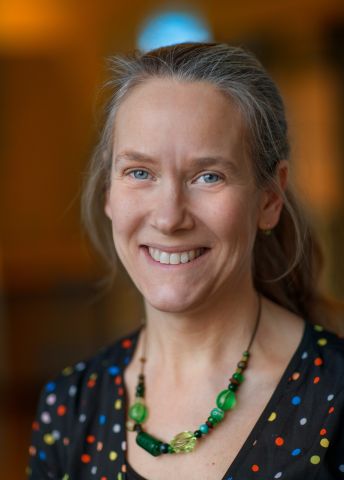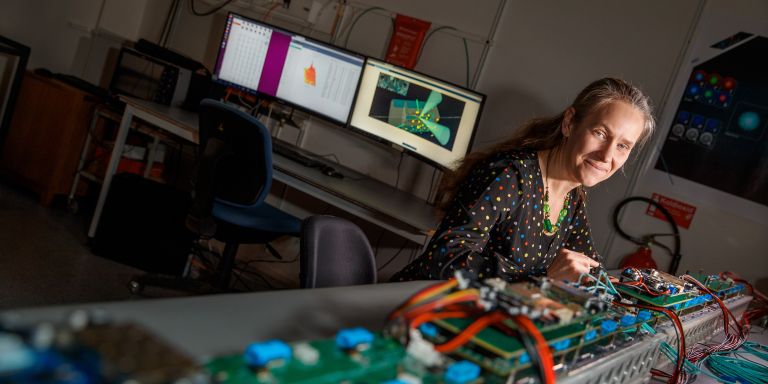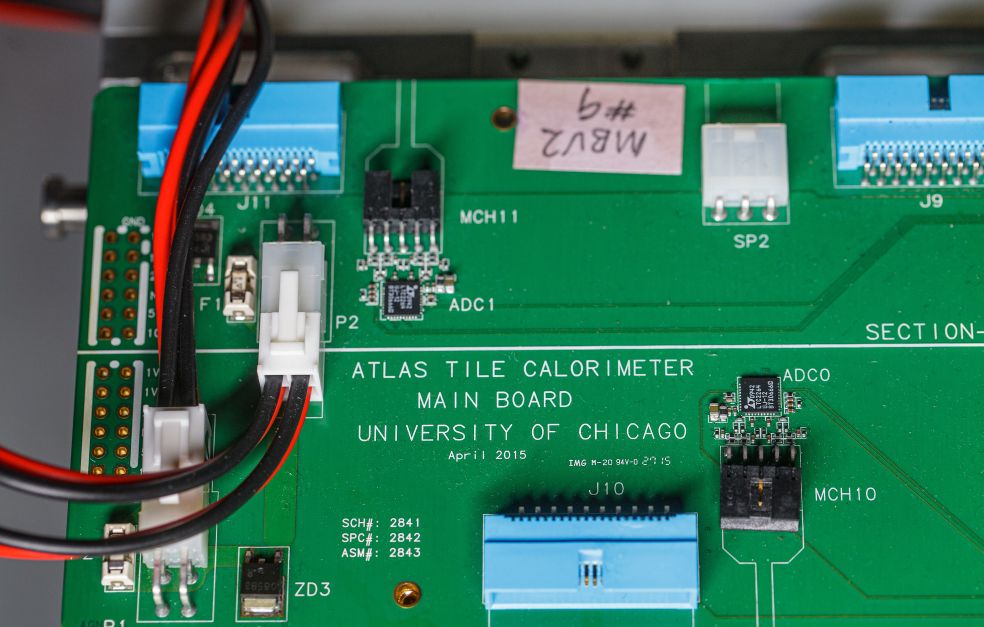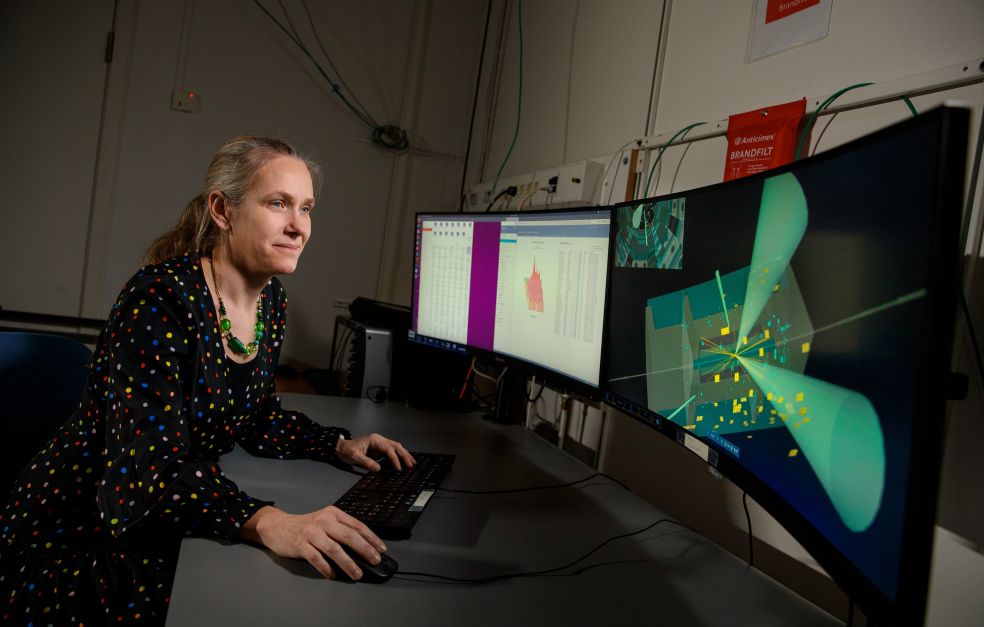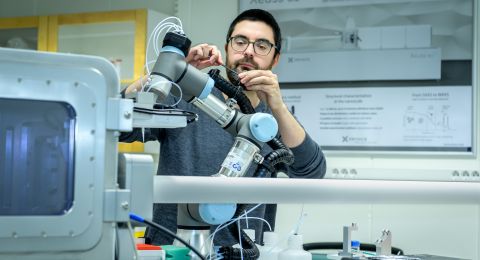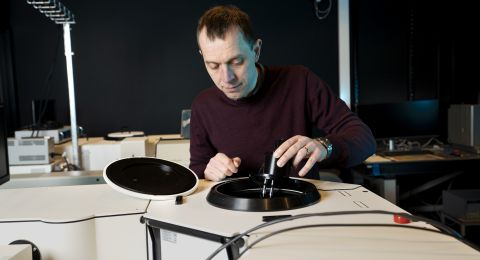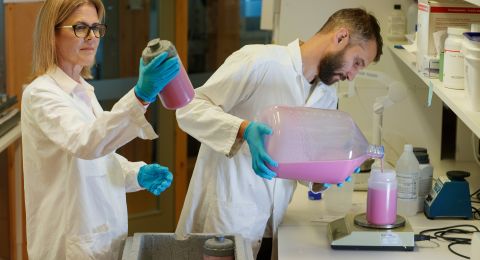The discovery of the Higgs particle at the LHC particle accelerator in CERN in Switzerland sent waves of joy throughout the research community. Yet the evidence raised several new questions about the components of the universe. Sara Strandberg is preparing an upgrade of the accelerator to obtain more answers.
Sara Strandberg
Professor of Elementary Particle Physics
Wallenberg Scholar
Institution:
Stockholm University
Research field:
Experimental elementary particle physics, studies of the Higgs particle and physics beyond the Standard Model
The next major upgrade of LHC is scheduled for 2026. In a basement lab on the AlbaNova university campus, some of the approximately one thousand circuit boards that will help increase precision are being tested. The upgrade will take nearly four years, after which researchers will be able to collect ten times more data per second than at present. The goal is to recreate what happened during the first picoseconds after the Big Bang.
Strandberg, who is a Wallenberg Scholar, heads research at Stockholm University under the auspices of the Atlas experiment at LHC.
“After the upgrade it will be possible to measure properties of the Higgs particle that are still unknown. We will also be able to gain a deeper understanding of the process in the early universe when elementary particles acquired their mass.”
The early history of the universe
Elementary particles may be described as ripples in the invisible energy fields that fill the universe: the quantum mechanical fields. These fields usually have a value of zero in their ground state – except for the Higgs field. Something happened during the first picoseconds after the Big Bang that gave the Higgs field unique properties. The researchers are hoping to shed light on this phase transition.
“Just after the Big Bang, a process occurred that is central to the history of the universe. If we can understand it better, it could answer a number of questions, such as why there is not as much antimatter as matter.”
The theory or model that best explains the interaction between the fundamental particles and forces of the universe is called the Standard Model. But the Standard Model is incomplete because it cannot answer several of the biggest questions in physics. For example, it does not include gravity or explain dark matter.
Measurements that will be possible at LHC over the coming decade could help to expand the Standard Model – or overturn it in favor of an entirely new theory.
“Personally, I hope we find something that does not align with the Standard Model at all. That would be at least as significant as discovery of the Higgs particle in 2012.”
Early involvement in the research project
The discovery of the Higgs particle was the result of a massive research effort in the Atlas and CMS projects, involving thousands of international researchers. Strandberg was one of them and has been part of the Atlas project since her time as a postdoc in 2007.
“The discovery felt absolutely fantastic in so many ways. As a particle physicist, you have to be very lucky to be involved in the discovery of a new particle. And it was also a relief after working so hard for so many years.”
Research in particle physics makes it possible to achieve something truly significant. I’ve always wanted to work in a research field where there is a chance to change our understanding of the world.
Much of the early work in the Atlas project was very practical: researchers wore safety helmets in excavated caverns and tunnels and installed detectors. The next upgrade will involve more of the same hands-on approach.
“That's almost the most fun part of this job: that you get to do everything. Design and build the experiments, calibrate them, and then collect data. Afterward, you write scientific articles that are the fruit of 30 years’ work,” says Strandberg.
Near the speed of light
In the experiments at the LHC, protons are accelerated to close to the speed of light before colliding with each other. Collisions occur about 40 million times a second, around the clock, all year round. Each collision produces large amounts of data that are then processed by algorithms.
The hope is that the new experiments will show how the Higgs particle splits into two Higgs particles. When that happens, the researchers can also gather important information about the properties of the particle’s origin: the Higgs field.
The Higgs field permeates the entire universe, and it is through their interactions with this field that all other particles acquire their mass. To explain the function of the Higgs field, Strandberg uses an analogy where the universe is seen as a field covered in deep snow.
Particles that are very heavy cross the field in regular shoes, causing them to sink deep into the snow and struggle to move forward. Meanwhile, lighter particles cross the field in snowshoes, and the lightest particles glide over the snow on freshly waxed skis.
However, you can never be completely certain of the knowledge new experiments will generate.
“You never know in advance what will happen. Just like when you roll a die, you can't say whether it will be a six or a two. Our job is to make these protons collide as often as we can – and then try to figure out afterward what has happened.”
Her interest in physics was sparked way back in middle school, when she enjoyed reading popular science articles about the universe. Yet physics seemed more like a hobby than a profession, so she initially started training to become a veterinarian. But while other students focused on everyday tasks involving animals, she sat nearby and pondered the cosmos and black holes.
“I soon realized that veterinary medicine was not for me, and I eventually turned to particle physics. My driving force has always been curiosity about how the world fits together. And now I've had the chance to rewrite the description in physics textbooks of what the universe is made of.”
Text Magnus Trogen Pahlén
Translation Maxwell Arding
Photo Magnus Bergström
